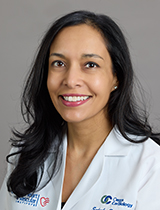by Sudeshna Banerjee, MD
When someone suffers sudden cardiac arrest, the first thing that happens is they pass out. The person stops breathing. Within two minutes, essential organs begin to shut down, as the heart is no longer pumping blood to the rest of the body. At five minutes, brain tissue death begins, reducing the odds of survival to 50/50 and causing potentially irreversible damage.
After seven minutes, the chance of surviving falls to 20 to 30 percent; at 10 minutes, it drops to just 10 percent. In 2016, more than 350,000 Americans experienced sudden cardiac arrest outside of a hospital; only 12 percent of them survived.
These frightening statistics illustrate why swift treatment — either with cardiopulmonary resuscitation (CPR) or an automated external defibrillator (AED) or both — is essential in saving someone’s life after cardiac arrest.
That is why I am so excited about
PulsePoint, a new free app that empowers citizens to become lifesavers. Think of it as crowdsourcing for CPR.
Here’s how it works:
Say a woman at your neighborhood park suffers sudden cardiac arrest. A bystander immediately calls 9-1-1. As soon as the information is conveyed to the dispatcher, a notification is sent to the phones of anyone within a quarter-mile of the park who has downloaded the app. If you were having lunch at a restaurant across the street, for example, you could immediately dash over to the park and start delivering lifesaving CPR well before paramedics arrive. This is what saves lives.
Anyone can download PulsePoint to their smartphone (iPhone or Android) for free — even those not trained in CPR. Although it’s intended for people with CPR skills, PulsePoint provides easy-to-follow, in-the-moment instructions for CPR. It also displays the location of the nearest AED.
Funded by PeaceHealth and others
With startup funding from PeaceHealth and other community partners, the Eugene Springfield Fire Department launched the PulsePoint program in November 2018. As of mid-February, 2,028 people in the Eugene-Springfield metro area had subscribed. All of us in the business of saving hearts, minds and lives — and that includes everyone on my team at Oregon Cardiology at PeaceHealth Sacred Heart Medical Center at RiverBend — want to see that number grow exponentially.
We also, of course, want to see higher rates of CPR training. According to a recent survey by the Cleveland Clinic, just over half of American adults say they know how to perform CPR. Medical experts now agree that the best form of bystander CPR consists of just chest compressions — no breaths. This practice, known as hands-only CPR, can dramatically improve survival rates when applied within the first moments of a cardiac arrest. Several organizations, including the American Red Cross, offer classes on a regular basis.
According to the PulsePoint website, more than 1.3 million people in nearly 4,000 communities are now connected to PulsePoint — and notifications have been issued for nearly 540,000 incidents of sudden cardiac arrest.
In my nine years as a cardiologist, I have lost dozens of patients to sudden cardiac arrest. I’ve also seen the life-changing damage it can inflict on survivors who weren’t able to get treatment quickly enough. These apps are already saving lives in other communities around the country, and they will save lives here.
Please download PulsePoint today from the app store for your device — and ask your friends and family to do the same.
This information is provided by Dr. Sudeshna Banerjee who is a cardiologist in Oregon Cardiology at PeaceHealth Sacred Heart Medical Center at RiverBend. This article originally ran in the March 7 edition of The Register-Guard.







